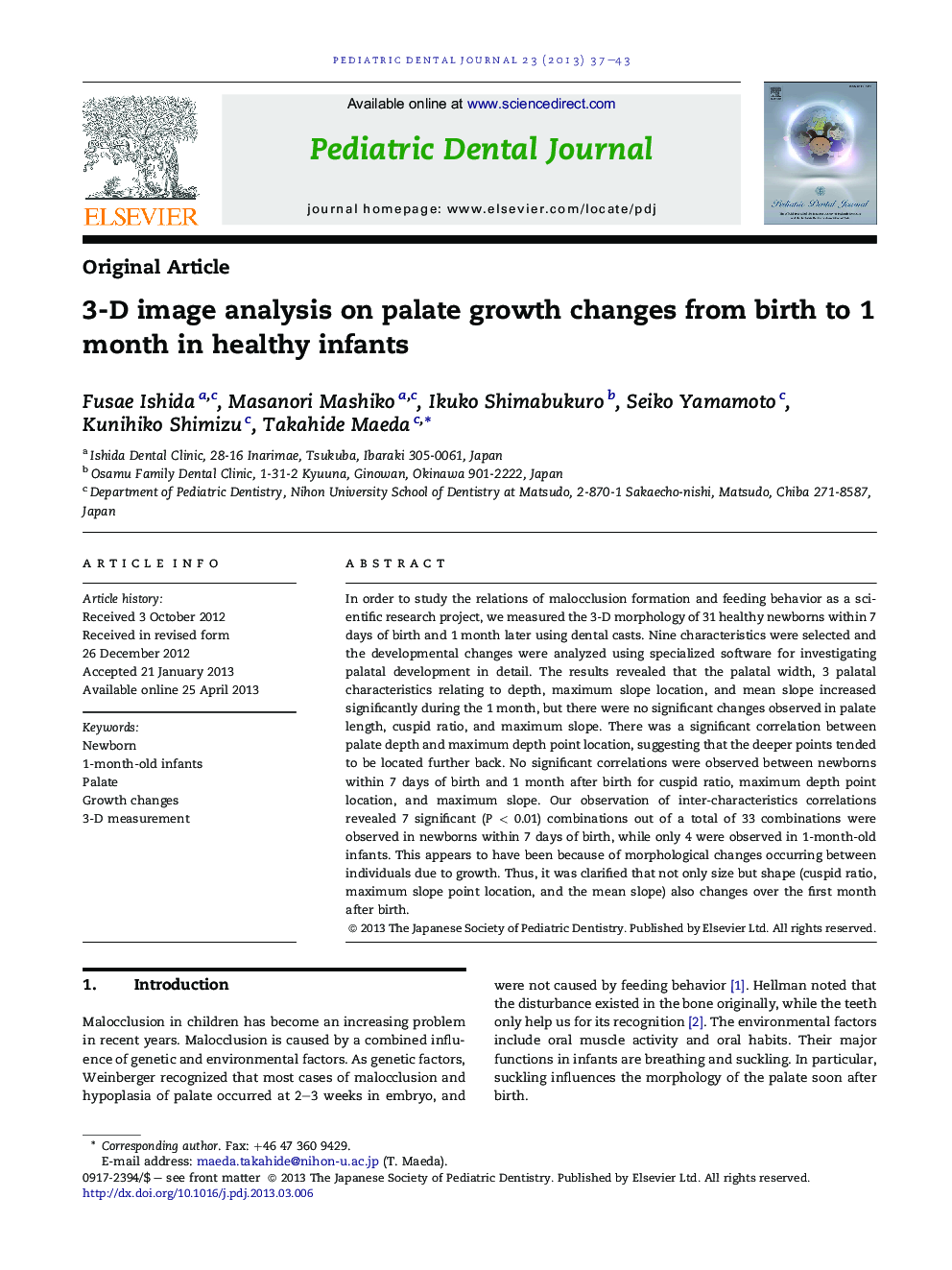| Article ID | Journal | Published Year | Pages | File Type |
|---|---|---|---|---|
| 3171571 | Pediatric Dental Journal | 2013 | 7 Pages |
In order to study the relations of malocclusion formation and feeding behavior as a scientific research project, we measured the 3-D morphology of 31 healthy newborns within 7 days of birth and 1 month later using dental casts. Nine characteristics were selected and the developmental changes were analyzed using specialized software for investigating palatal development in detail. The results revealed that the palatal width, 3 palatal characteristics relating to depth, maximum slope location, and mean slope increased significantly during the 1 month, but there were no significant changes observed in palate length, cuspid ratio, and maximum slope. There was a significant correlation between palate depth and maximum depth point location, suggesting that the deeper points tended to be located further back. No significant correlations were observed between newborns within 7 days of birth and 1 month after birth for cuspid ratio, maximum depth point location, and maximum slope. Our observation of inter-characteristics correlations revealed 7 significant (P < 0.01) combinations out of a total of 33 combinations were observed in newborns within 7 days of birth, while only 4 were observed in 1-month-old infants. This appears to have been because of morphological changes occurring between individuals due to growth. Thus, it was clarified that not only size but shape (cuspid ratio, maximum slope point location, and the mean slope) also changes over the first month after birth.
